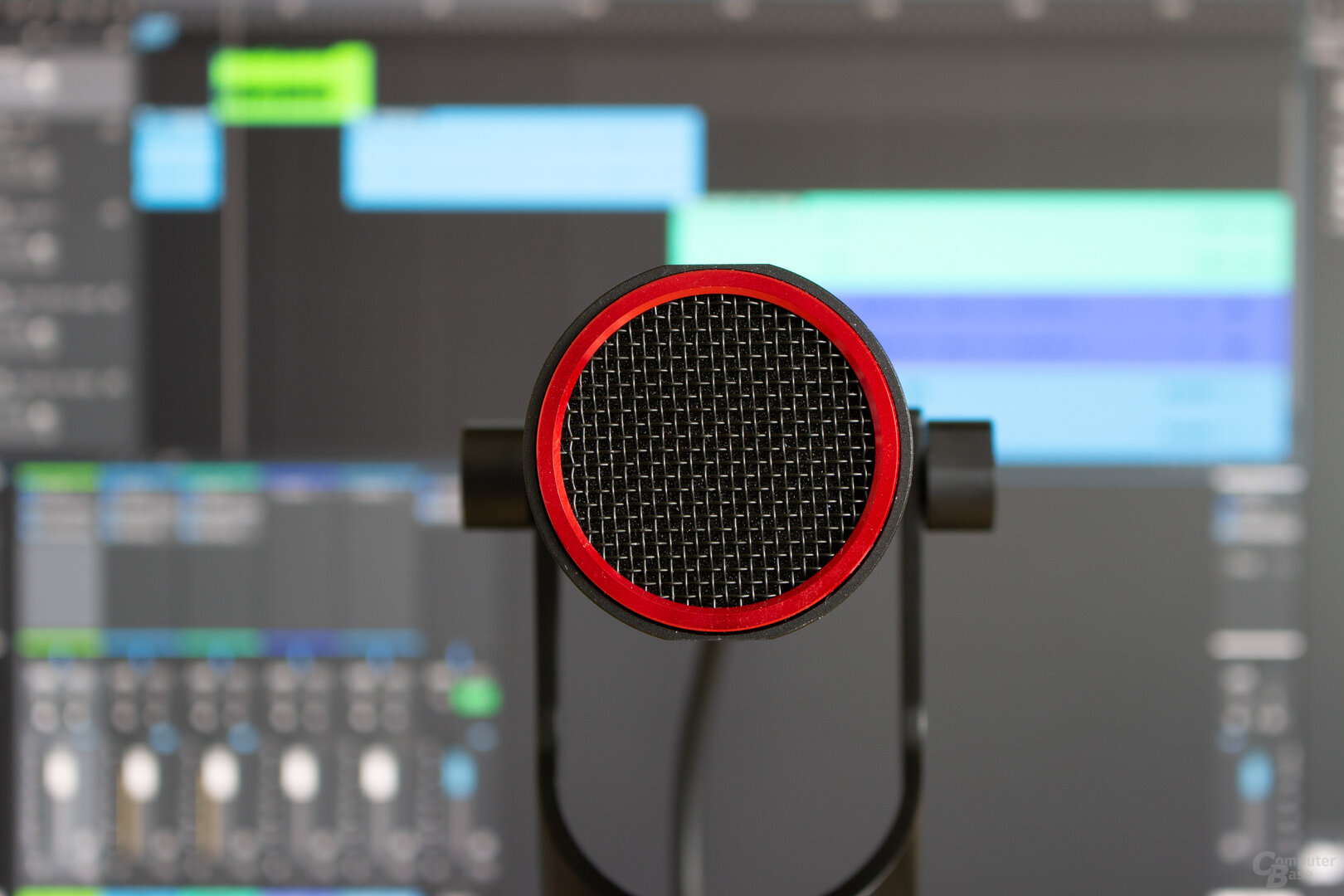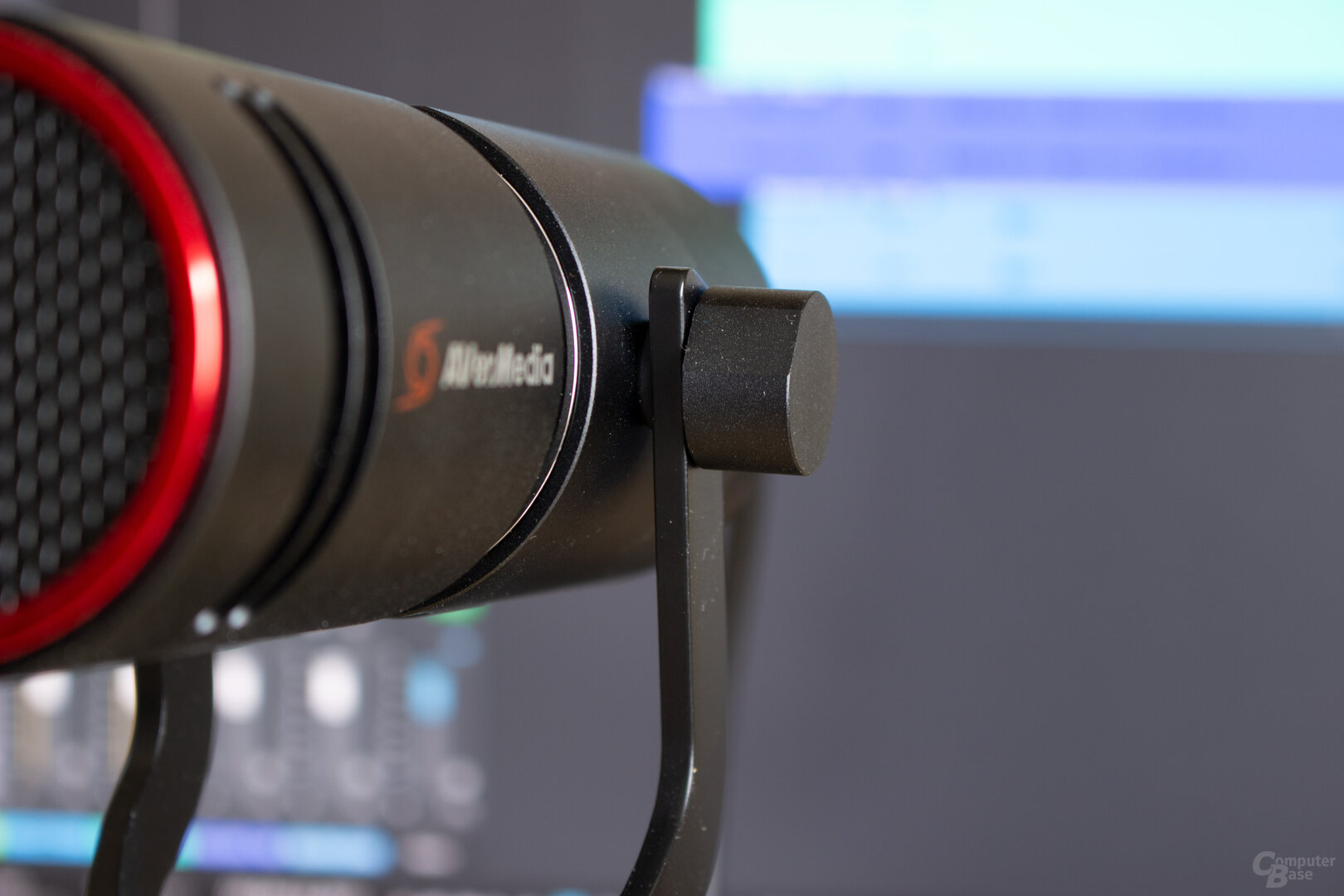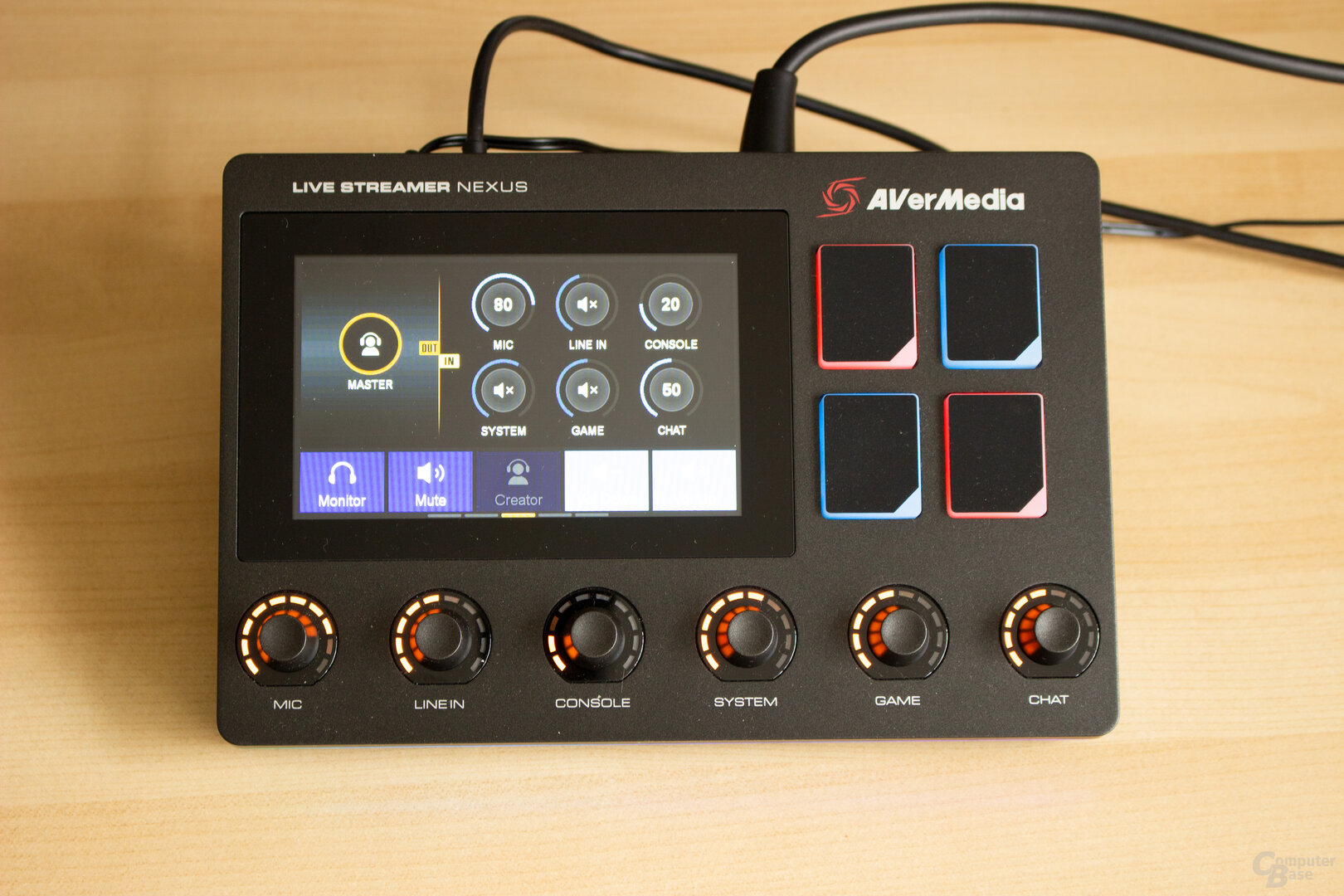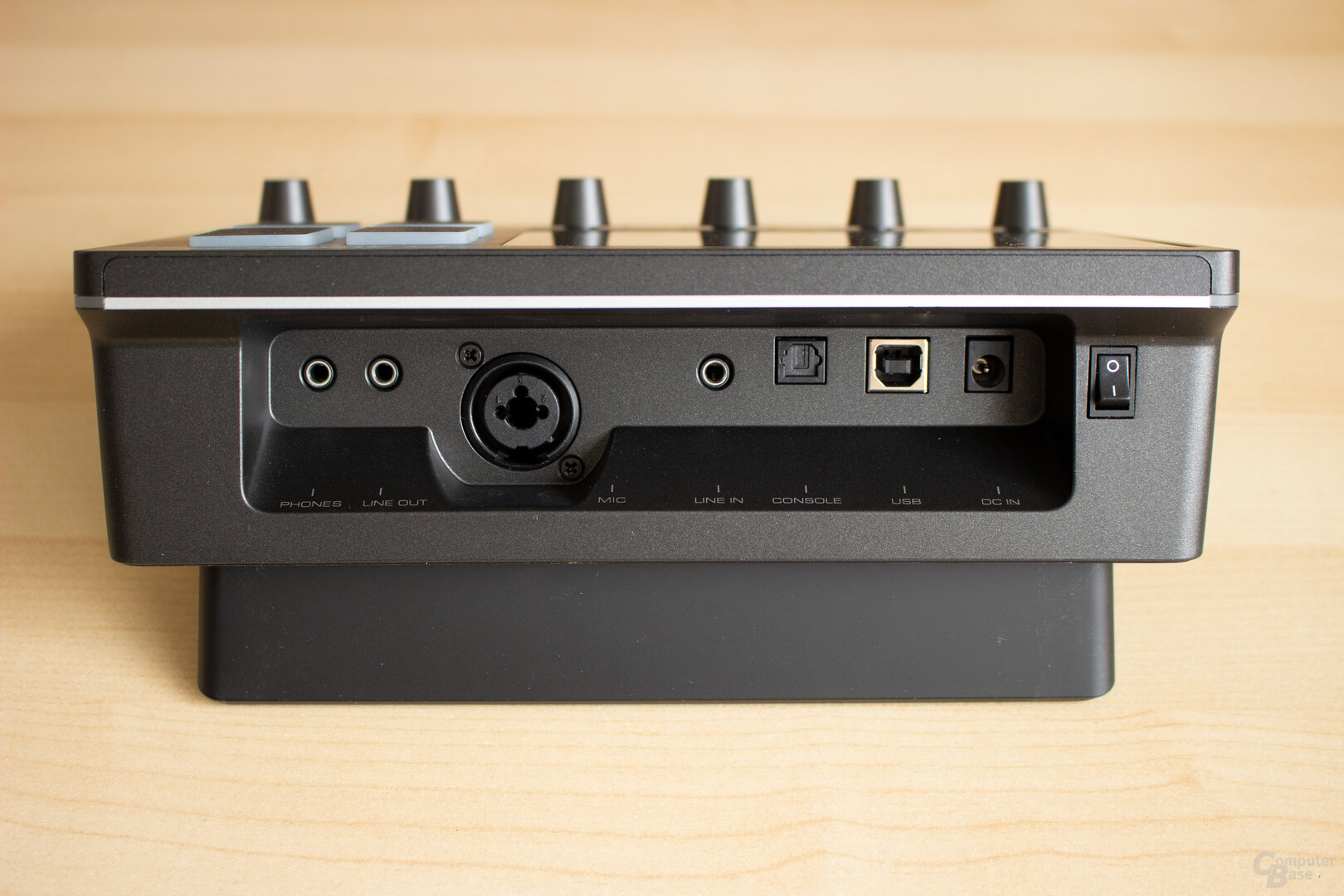With the microphone MIC 330 (AM330) and the streaming console Nexus (AX310), Aver Media offers a complete audio solution especially for live streams and podcasts. The microphone offers a solid voice quality in the test, but weakens with plosive sounds. The Nexus mixing console (still) lacks important functions.
Table of contents
- 1 micro-mixing console kit for Streamers and podcasters
- Design and workmanship
- Technical data
- 2 Microphone quality, Nexus in use
- Sound MIC 330 (AM330)
- Commissioning Live Streamer Nexus (AX 310)
- 3 Conclusion
Design and processing
The dynamic microphone MIC 330 from the Live Streamer series from Aver Media, which is available for around 100 euros, looks a lot. The body is made entirely of metal and has been neatly processed. The microphone is constructed like a tube with a length of 16.5 cm and a diameter of 5.5 cm. The metal grille in the front protects the microphone underneath. There is also an integrated pop screen between the two to protect the recording from interference from plosives and drafts. The red ring around the grille can be removed and replaced with the silver version supplied – this means that two microphones can be visually differentiated from one another when used at the same time.
The mute switch is hidden somewhat unwieldy on the underside. The choice turned out to be quite unfortunate: On the one hand, the switch is a bit difficult to reach due to the microphone holder and the microphone has to be held by hand to operate – both in turn trigger audible noise. Attaching a sensor variant, as used by many other manufacturers, to the top of the sound pick-up would have been a much better and more practical solution.
 The red ring of the MIC 330 can be changed
The red ring of the MIC 330 can be changed XLR instead of USB
When it comes to connection, Aver Media relies on a three-pin XLR connector for the MIC 330 and not on USB. This is located at the back of the tubular microphone. The construction of the bracket also allows the microphone to be used in different positions, whether upside down or sideways – any posture is possible. Using an adapter, the combination can also be screwed onto a 3/8 '' or 5/8 '' thread without any problems. The alignment screws on the side could have been made a little more grippy, however, because they have to be tightened well to hold the microphone in the selected position and not give way when touched.
 The screws of the bracket of the MIC 330 could have been a bit more handy can
The screws of the bracket of the MIC 330 could have been a bit more handy can Live Streamer Nexus
It looks a little different with the processing of the 350 Euro live stream console Nexus (AX310) from Aver Media, here plastic acts as the dominant material. The 21.5 × 14.5 cm control desk is supplied with an additional magnetic stand with which the installation angle can be changed – but it is not freely selectable, only a height of 6.5 and 9 cm can be chosen. In addition, the housing has an LED ring that can shine in different colors and shapes. Whether something like this is really needed for such a product remains to be seen.
The 5-inch capacitive IPS display on the front is particularly eye-catching. Next to this are four rubberized pad buttons, which initially give the impression of importing jingles or effects, but can generally be assigned various functions. Under these control components there are six slightly loosely fitting controls with which different sources can be mixed.
 The Live Streamer Nexus from Aver Media
The Live Streamer Nexus from Aver Media Numerous connections, but only one microphone class = “p text-width”>On the back, in addition to the power switch and the connections required for general function, such as power via the supplied power supply unit and the somewhat old-fashioned USB-B port, the audio inputs in both digital and analogue form (3.5 mm line In, XLR) as well as a line-out and a headphone output – both also in 3.5 mm jack. This means that only one microphone can be operated directly on the streamer, all other pickups must either be brought in via the digital or analog port. Especially for podcasts, which often have several participants, a second XLR or at least a jack connection would have been advantageous.
 The Nexus from Aver Media offers only one microphone input
The Nexus from Aver Media offers only one microphone input Technical data
The technology of the two components is processed quickly: According to the manufacturer, the dynamic MIC 330 has a frequency response of 50 Hz to 18 kHz. The cardioid polar pattern should also ensure that signals mainly coming from the front find their way to further processing. Noises from the side or even from behind should at least be reduced. However, this also means that the microphone is basically only designed for one person and that this person should be placed directly in front of the recording unit. Off-axis use, i.e. speaking from the side in order to be able to record two people, is theoretically possible, but usually associated with audible losses in sound quality.
Since the MIC 330 is a dynamic microphone, no 48-volt phantom power is required for operation. As a result, the sound pick-up makes itself dependent on an appropriately equipped audio interface, but at the same time it is more independent of USB connections.
The Nexus console, on the other hand, processes signals with a fixed 24 bit at a sampling rate of either 48 or 96 kHz. An output of lower 16 bits must therefore be converted using the streaming or recording software. Even if the resolution and sampling rate are higher, the frequency range only covers a range from 10 Hz to 20 kHz. The integrated optical input can only accept stereo signals.
On the next page: Microphone quality, Nexus in use